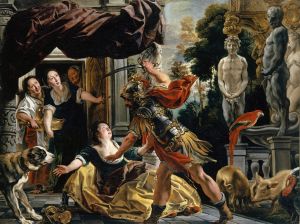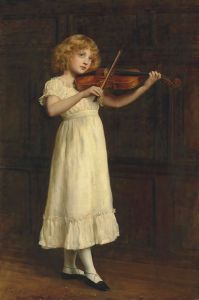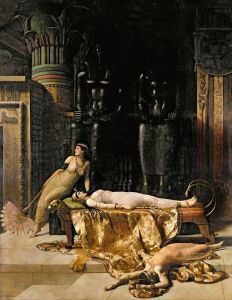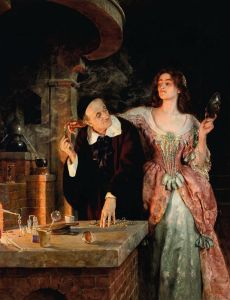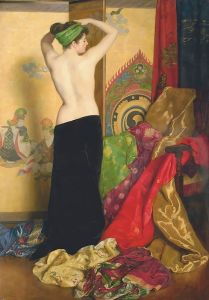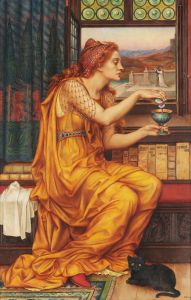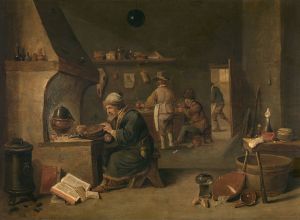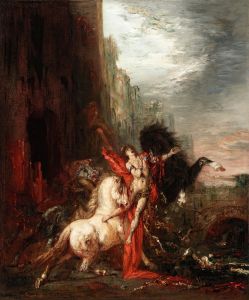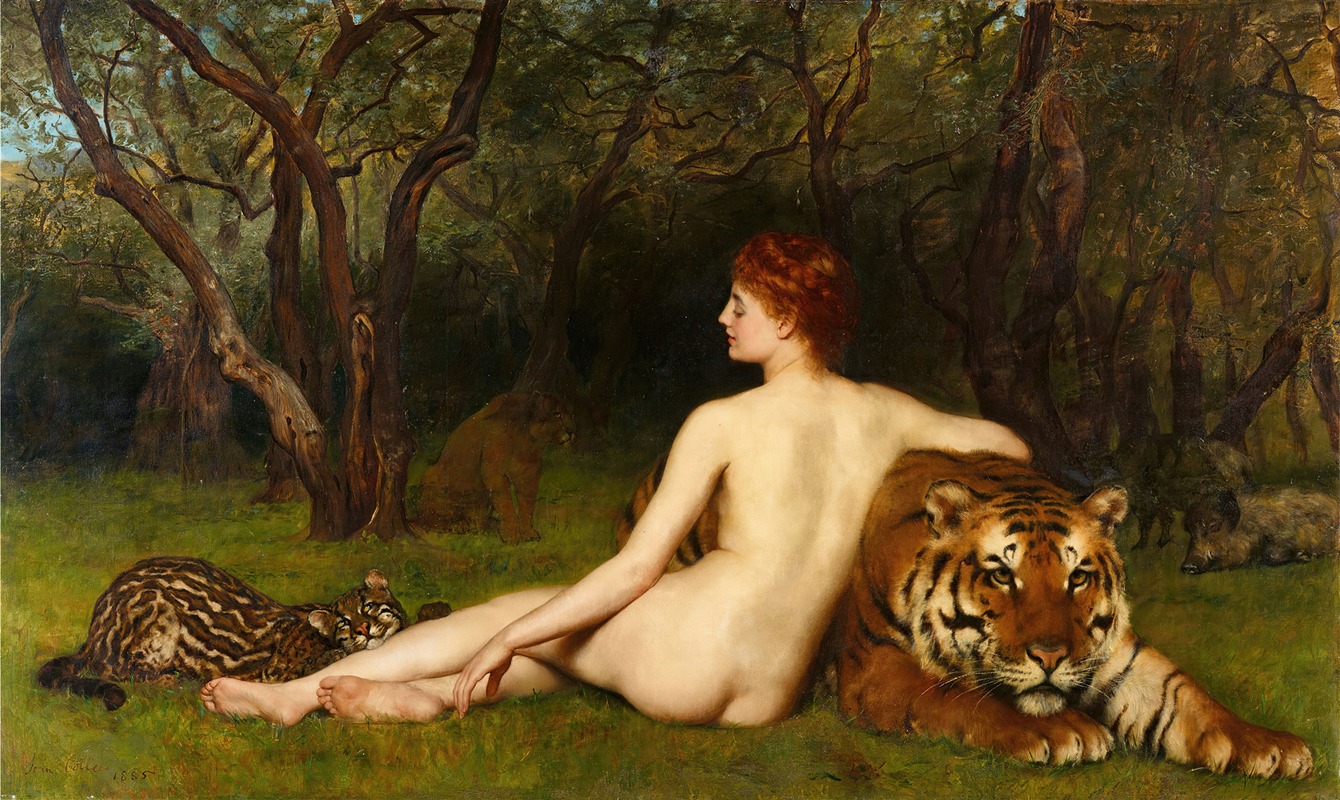
Circe
A hand-painted replica of John Collier’s masterpiece Circe, meticulously crafted by professional artists to capture the true essence of the original. Each piece is created with museum-quality canvas and rare mineral pigments, carefully painted by experienced artists with delicate brushstrokes and rich, layered colors to perfectly recreate the texture of the original artwork. Unlike machine-printed reproductions, this hand-painted version brings the painting to life, infused with the artist’s emotions and skill in every stroke. Whether for personal collection or home decoration, it instantly elevates the artistic atmosphere of any space.
John Collier's painting "Circe" is a notable work by the English artist, who was an important figure in the Pre-Raphaelite movement. Collier, born in 1850, was known for his portraits and genre paintings, often depicting mythological and literary subjects. "Circe" is one of his most recognized works, capturing the essence of the mythological enchantress from Homer's "Odyssey."
The painting portrays Circe, a powerful sorceress known for her ability to transform humans into animals. In the "Odyssey," she is encountered by Odysseus and his men on her island, Aeaea. Circe initially uses her magic to turn Odysseus's men into swine, but Odysseus, protected by the herb moly given to him by Hermes, confronts her and eventually persuades her to restore his men to their human forms. The story of Circe has been a popular subject in art and literature, symbolizing themes of transformation, power, and seduction.
Collier's depiction of Circe is characteristic of the Pre-Raphaelite style, which emphasized vivid colors, attention to detail, and complex compositions. In this painting, Circe is often shown in a commanding pose, surrounded by elements that allude to her magical abilities. The use of rich, vibrant colors and intricate details in the setting and her attire reflect the influence of the Pre-Raphaelite Brotherhood, a group of artists who sought to return to the detail-oriented and vibrant style of art before the High Renaissance.
The painting captures the allure and danger associated with Circe's character. Her expression and posture convey both her beauty and her formidable nature as a sorceress. The setting often includes symbolic elements such as animals or magical paraphernalia, reinforcing her connection to the natural and supernatural worlds.
John Collier's work, including "Circe," was well-received during his lifetime, and he was considered one of the leading portrait painters of his era. His ability to blend mythological themes with a realistic portrayal of human figures made his work appealing to a wide audience. "Circe" exemplifies his skill in capturing the complexity of mythological characters, making them accessible and engaging to viewers.
Collier's interest in mythology and literature was a common theme in his work, and he often drew inspiration from classical sources. His paintings are noted for their narrative quality, inviting viewers to explore the stories behind the images. "Circe" is a testament to his ability to bring ancient myths to life through his art.
Today, John Collier's "Circe" continues to be appreciated for its artistic merit and its contribution to the depiction of mythological subjects in art. The painting remains an important example of the Pre-Raphaelite movement's impact on 19th-century art and its enduring influence on the portrayal of literary and mythological themes.





